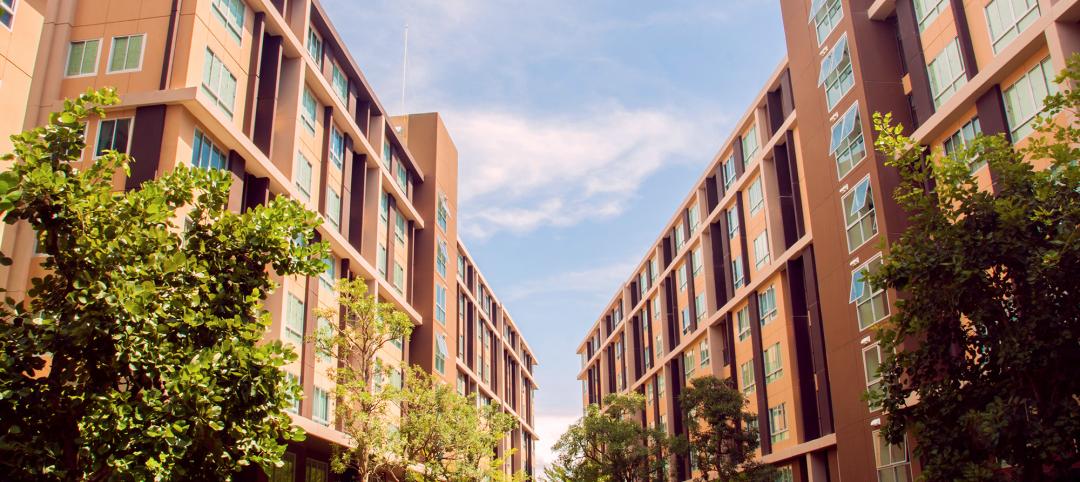Dodge Data & Analytics (https://www.construction.com/
“The U.S. construction industry has moved into a mature stage of expansion,” stated Robert Murray, chief economist for Dodge Data & Analytics. “After rising 11% to 13% per year from 2012 through 2015, total construction starts advanced a more subdued 5% in 2016. An important question entering 2017 was whether the construction industry had the potential for further expansion. Several project types, including multifamily housing and hotels, have pulled back from their 2016 levels, but the current year has seen continued growth by single family housing, office buildings, and warehouses. In addition, the institutional segment of nonresidential building has been quite strong, led especially by transportation terminal projects in combination with gains for schools and healthcare facilities. As for public works, the specifics of a $1 trillion infrastructure program by the Trump Administration have yet to materialize, so activity continues to hover around basically the plateau for construction starts reached a couple of years ago. Total construction starts in 2017 are estimated to climb 4% to $746 billion.”
“For 2018, there are several positive factors which suggest that the construction expansion has further room to proceed,” Murray continued. “The U.S. economy next year is anticipated to see moderate job growth. Long term interest rates may see some upward movement but not substantially. While market fundamentals for commercial real estate won’t be quite as strong as this year, funding support for construction will continue to come from state and local bond measures. Two areas of uncertainty relate to whether tax reform and a federal infrastructure program get passed, with their potential to lift investment. Overall, the year 2018 is likely to show some construction project types register gains while other project types settle back, with the end result being a 3% increase for total construction starts. By major sector, gains are predicted for residential building, up 4%; and nonresidential building, up 2%; while nonbuilding construction stabilizes after two years of decline.”
The pattern of construction starts by more specific segments is the following:
– Single family housing will rise 9% in dollars, corresponding to a 7% increase in units to 850,000 (Dodge basis). Continued employment growth has eased some of the caution shown by potential homebuyers, while older Millennials in their 30s are helping to lift demand for single family housing. A modest boost will also come from rebuilding efforts in Texas and Florida after Hurricanes Harvey and Irma.
– Multifamily housing will retreat 8% in dollars and 11% in units to 425,000 (Dodge basis). This project type appears to have peaked in 2016, helped by widespread growth across major metropolitan markets. That strength has begun to wane in 2017, given slight deterioration in market fundamentals (rent growth, occupancies) and a more cautious bank lending stance.
– Commercial building will increase 2%, following a 3% gain in 2017, and continuing to decelerate after the sharp 21% hike back in 2016. Office construction should see further growth in 2018, helped by broad development efforts in downtown markets, and warehouse construction is supported by greater demand arising from e-commerce. However, store construction will remain weak, and hotel construction will continue to pull back from its 2016 peak.
– Institutional building will advance 3%, maintaining its upward track after this year’s 14% jump. Educational facilities should see more substantial growth next year, lifted by the passage of recent school construction bond measures. The robust volume of transportation terminal projects in 2017 may not be repeated in 2018, but activity should stay at a high level.
– Manufacturing plant construction will recede 1% in dollar terms, after surging 27% this year due to the start of several massive petrochemical projects. Next year should still see moderate growth for manufacturing plants in square footage terms.
– Public works construction will improve 3%, slightly more than the 1% growth in 2017. Highways and bridges should be helped as federal funding rises to the levels called for by the FAST Act, while the environmental categories will partly reflect reconstruction efforts related to Hurricanes Harvey and Irma. Additional benefit may come from the infrastructure program proposed by the Trump Administration, should it achieve passage in some form.
– Electric utilities and gas plants will drop 13%, falling for the third year in a row after the exceptional amount reported in 2015. Power plant construction starts will ease back as new generating capacity comes on line.
The 2018 Dodge Construction Outlook was presented at the 79th annual Outlook Executive Conference held by Dodge Data & Analytics at the Swissotel in Chicago IL. Copies of the report with additional details by building sector can be ordered here.
Related Stories
Multifamily Housing | Jan 15, 2024
Multifamily rent growth rate unchanged at 0.3%
The National Multifamily Report by Yardi Matrix highlights the highs and lows of the multifamily market in 2023. Despite strong demand, rent growth remained unchanged at 0.3 percent.
Apartments | Jan 9, 2024
Apartment developer survey indicates dramatic decrease in starts this year
Over 56 developers, operators, and investors across the country were surveyed in John Burns Research and Consulting's recently-launched Apartment Developer and Investor Survey.
Self-Storage Facilities | Jan 5, 2024
The state of self-storage in early 2024
As the housing market cools down, storage facilities suffer from lower occupancy and falling rates, according to the December 2023 Yardi Matrix National Self Storage Report.
Urban Planning | Dec 18, 2023
The impacts of affordability, remote work, and personal safety on urban life
Data from Gensler's City Pulse Survey shows that although people are satisfied with their city's experience, it may not be enough.
MFPRO+ News | Dec 11, 2023
U.S. poorly prepared to house growing number of older adults
The U.S. is ill-prepared to provide adequate housing for the growing ranks of older people, according to a report from Harvard University’s Joint Center for Housing Studies. Over the next decade, the U.S. population older than 75 will increase by 45%, growing from 17 million to nearly 25 million, with many expected to struggle financially.
Industry Research | Dec 9, 2023
Two new reports provide guidance for choosing healthier building products
The authors, Perkins&Will and the Healthy Building Network, home in on drywall, flooring, and insulation.The authors, Perkins&Will and the Healthy Building Network, home in on drywall, flooring, and insulation.
Student Housing | Dec 5, 2023
October had fastest start ever for student housing preleasing
The student housing market for the upcoming 2024-2025 leasing season has started sooner and faster than ever.
Industry Research | Nov 28, 2023
Migration trends find top 10 states Americans are moving to
In the StorageCafe analysis of the latest migration trends, each U.S. state was looked at to see the moving patterns of people in the last few years. These are the top 10 states that people are moving to.
Market Data | Nov 27, 2023
Number of employees returning to the office varies significantly by city
While the return-to-the-office trend is felt across the country, the percentage of employees moving back to their offices varies significantly according to geography, according to Eptura’s Q3 Workplace Index.
MFPRO+ News | Nov 21, 2023
Renters value amenities that support a mobile, connected lifestyle
Multifamily renters prioritize features and amenities that reflect a mobile, connected lifestyle, according to the National Multifamily Housing Council (NMHC) and Grace Hill 2024 Renter Preferences Survey.

















